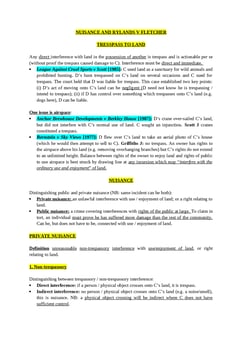Beard v London General Omnibus Co [1900] 2 QB 530
Judgement for the case Beard v London General Omnibus Co
Table Of Contents
KEY POINTS
In master and servant liability, the master can be held responsible for the actions of their servant, including instances where a bus is driven negligently by a conductor.
To establish liability, it is necessary to demonstrate that the negligent act occurred within the scope of the servant's authority.
FACTS
The regular driver of the bus entrusted the vehicle's care to the conductor. The conductor, with the intention of preparing the bus for its imminent return trip, commenced maneuvering the vehicle. However, the conductor's actions led to an accident where the plaintiff was struck and injured.
The plaintiff initiated a negligence lawsuit against the owners of the bus. During the course of the trial, the plaintiff opted not to present any evidence pertaining to the conductor's authority to operate the bus. This omission cast ambiguity over the proceedings, raising questions about the conductor's qualifications, training, and the extent of their responsibility in the incident.
JUDGEMENT
It was determined that the individual operating the bus at the time of the accident was not the authorized driver but, in fact, employed by the defendants as a conductor.
There was a lack of evidence to establish that this conductor had received any specific authority to operate the bus or that he was acting within the scope of his employment in doing so.
The plaintiff's action did not succeed.
COMMENTARY
A pivotal aspect of this legal battle is the plaintiff's failure to present conclusive evidence regarding the conductor's authority to operate the omnibus during the trial. This gap in evidence became a central issue, casting uncertainty over the conductor's legal status and responsibilities.
The judgment rendered in this case underscored a critical point: the individual behind the wheel of the bus at the time of the accident was not the authorized driver. The judgment also highlighted the conspicuous absence of any substantiated proof suggesting that the conductor had been granted special driving authority or was acting within the scope of their employment duties.
ORIGINAL ANALYSIS
X, a bus conductor, decided to turn Defendant’s bus around so that it was facing the right direction for the next journey, in the absence of the driver, and negligently hit Plaintiff, who sued Defendant.
CA dismissed Plaintiff’s claim since X had not been authorised to drive the bus and the negligence did not therefore occur within the scope of X’s employment.
Smith LJ
Normally there is a presumption that the person operating the thing is authorised to do so, but this presumption is negatived here since it was the conductor, not the driver, who was driving.
For Further Study on Beard v London General Omnibus Co
Need instant answers? Our AI exam tutor is here to help.
Ask questions 🙋 Get answers 📔 It's simple 👁️👄👁️
Our AI is educated by the highest scoring students across all subjects and schools. Join hundreds of your peers today.
Get StartedSimilar Cases
Related Product Samples
These product samples contain the same concepts we cover in this case.
| Tort Law | Products Liability Notes (17 pages) |

 Since 2010, Oxbridge Notes has been a trusted education marketplace, supplying high-quality materials from top achievers at universities like Oxford, Cambridge, LSE, Harvard, and Yale.
Since 2010, Oxbridge Notes has been a trusted education marketplace, supplying high-quality materials from top achievers at universities like Oxford, Cambridge, LSE, Harvard, and Yale.